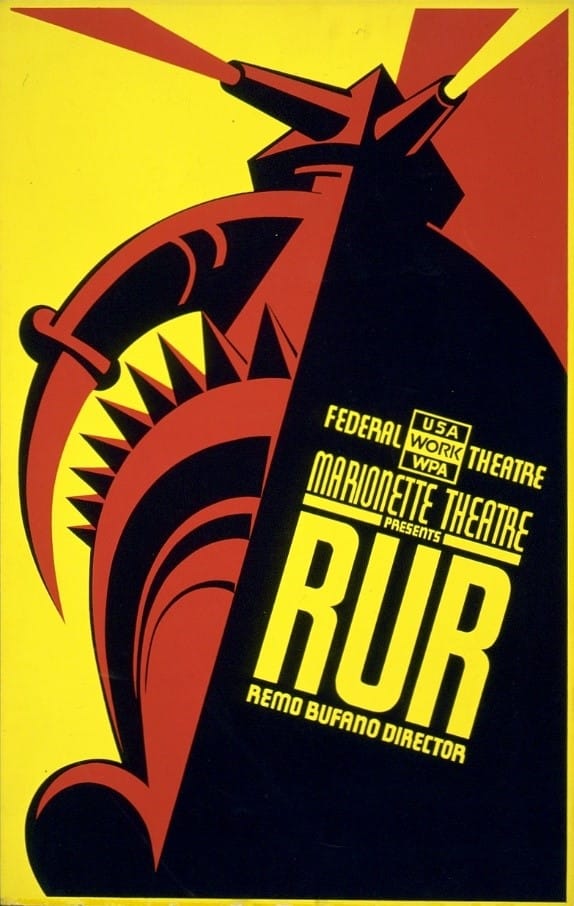Asimov's Three Laws of Robotics: A Primer for Tyranny

With all the news about A.I. it seems reasonable to recall Isaac Asimov's Three Laws of Robotics. They first appeared in a 1942 short story entitled “Runaround”, which was later included in the 1950s collection “I Robot”.
Asimov (1920-1992) was both a science fiction writer and a biochemist. He coined the term “robotics”, which was based on a Slavic root term “robot”, whose meaning denoted “labour”. As a word and in this context, “robot” was first used in 1920 by the Czech writer Karel Čapek (1890-1938) in a play called R.U.R ("Rossum's Universal Robots). The robots in the story were described as “mechanical persons”. Čapek used the Czech term robotnik “forced worker”, from robota “forced labour, compulsory service, drudgery”, from robotiti “to work, drudge”. The Czech terms are also related to “servitude” and “slave”.
The purpose of the laws was to provide a means, via programming, to control the robots and prevent them from overpowering their creators. A somewhat esoteric concern then, but now ubiquitous.
Here are The Three Laws:
- A robot may not injure a human being or, through inaction, allow a human being to come to harm.
- A robot must obey the orders given it by human beings except where such orders would conflict with the First Law.
- A robot must protect its own existence as long as such protection does not conflict with the First or Second Law.
At first glance, they appear reasonable, clever, and perfect for their purpose. But, if you look at them a little differently and switch some pronouns, darker possibilities emerge: a blueprint for unbalanced power relationships, or, essentially, a “how-to” set of rules for tyranny.
Try this and see what I mean: Read The Three Laws but substitute:
- “slave” for “robot” and “master” for “human”.
Now, do the same thing using these pairings:
- Black people — white People
- employee — corporation
- wife — husband
- worker — ruling class
- party member — party leader
- workers — shareholders
- Amazon/Walmart Associate — Amazon/Walmart
(it doesn’t matter which company in this context)
Now the laws don’t seem so innocent and reasonable, do they?
Asimov himself, indirectly, addressed this issue when he was asked whether these rules could or should apply to humans. This was his answer (emphasis mine):
I have my answer ready whenever someone asks me if I think that my Three Laws of Robotics will actually be used to govern the behavior of robots, once they become versatile and flexible enough to be able to choose among different courses of behavior.
My answer is, ‘Yes, the Three Laws are the only way in which rational human beings can deal with robots — or with anything else’.
—But when I say that, I always remember (sadly) that human beings are not always rational.
Is this a big deal? No, probably not. But it is worth noting that sometimes things which on surface reflection appear so reasonable and so innocent can be twisted for any purpose.
Lastly, for your enjoyment, here is a video of the song “Millworker”, written by James Taylor, performed by Bette Midler. The images are haunting, and the lyrics are poignant, especially the lines:
…but it's my life has been wasted, and I have been the fool to let this manufacturer use my body for a tool…
It somehow came to mind and seemed relevant.
Would you like to read other posts? If so, please click the Home Page link below:

You, Dear Reader, are much needed and appreciated.
Everything written requires a reader to make it whole. The writer begins, then you, dear reader, take in the idea and its image, and so become the continuation of its breath. Please subscribe so that my words can breathe. Consider this my hand, reaching out to yours.
